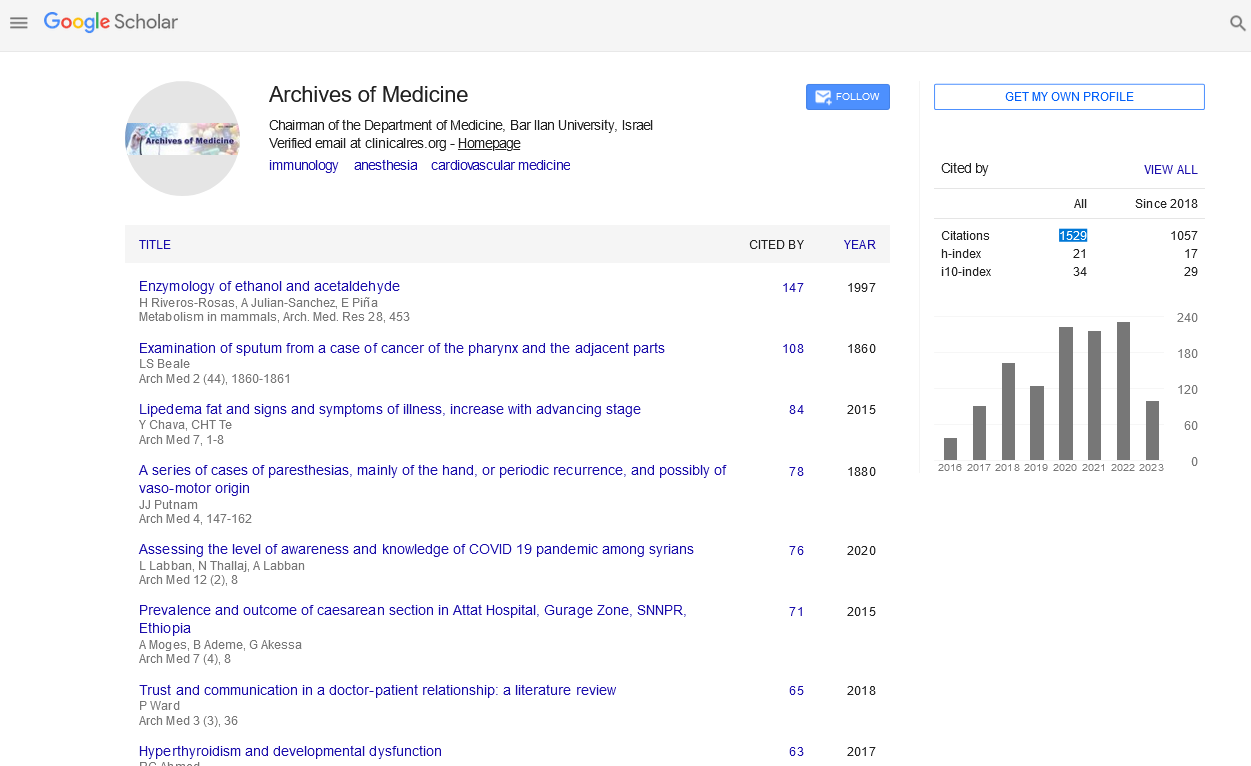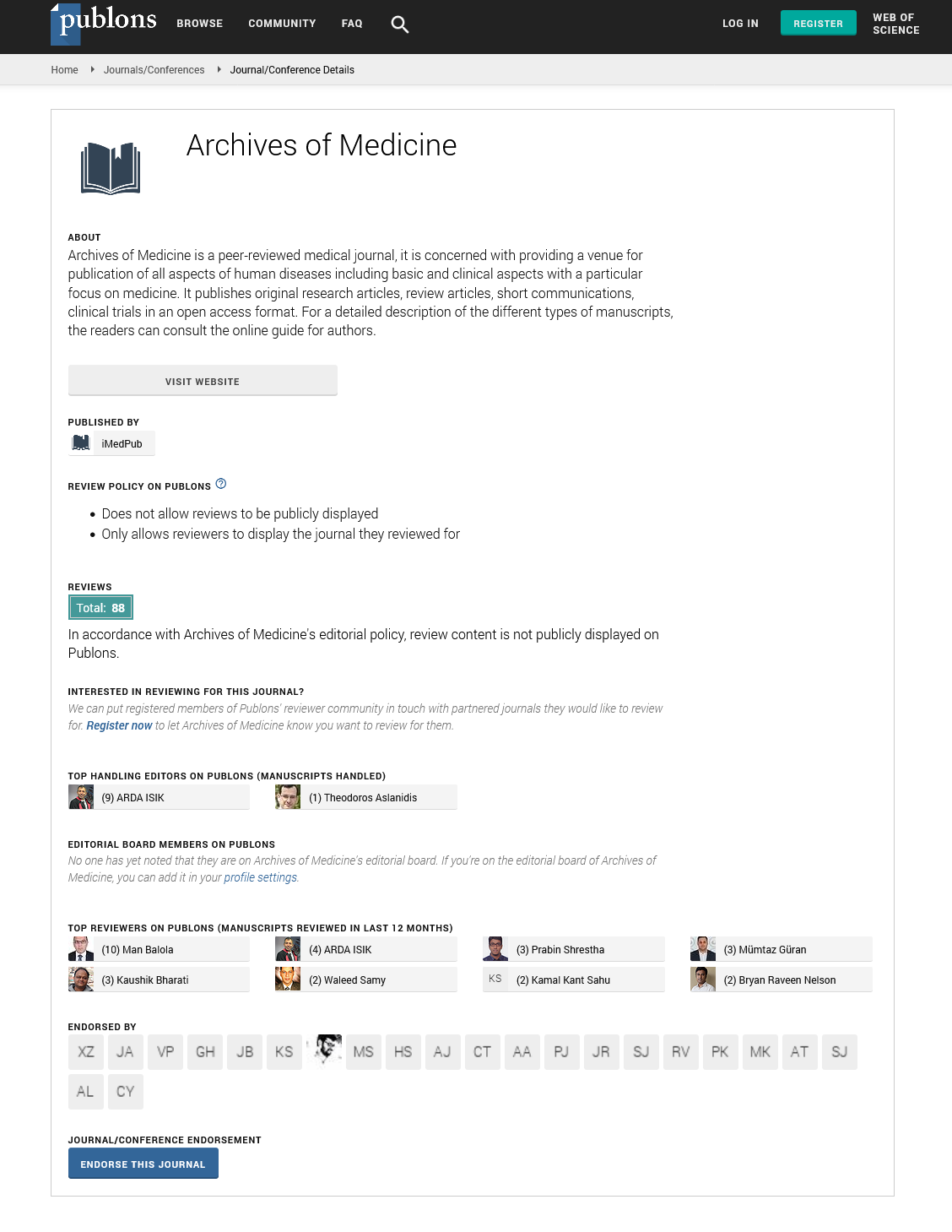Prospective - (2024) Volume 16, Issue 3
Navigating toxins: A comprehensive guide to toxicology and therapeutics
Kristin Smith*
Department of Clinical Medicine, Aalborg University, Aalborg, Denmark
*Correspondence:
Kristin Smith, Department of Clinical Medicine, Aalborg University, Aalborg,
Denmark,
Email:
Received: 01-May-2024, Manuscript No. ipaom-24-14998;
Editor assigned: 03-May-2024, Pre QC No. P-14998;
Reviewed: 15-May-2024, QC No. Q-14998;
Revised: 22-May-2024, Manuscript No. R-14998;
Published:
29-May-2024
Introduction
Toxicology is the study of the adverse effects of chemical, physical, or biological agents on living organisms and the environment, while therapeutics involves the treatment of disease and the management of adverse drug reactions. Together, these disciplines form the foundation of toxicology and therapeutics, encompassing a broad spectrum of knowledge and expertise essential for protecting human health and mitigating the risks associated with exposure to toxins. The field of toxicology traces its roots back to ancient civilizations, where observations of poisonings and antidotes were documented in early medical texts. Ancient cultures such as the Egyptians, Greeks, and Romans were well acquainted with the toxic properties of various substances, often employing them for medicinal, ritual, or nefarious purposes. The use of poison as a weapon of war and assassination was prevalent throughout history, with notable examples including the poisoning of Socrates with hemlock in ancient Greece and the assassination of Cleopatra with the venom of an asp in ancient Egypt. In the middle Ages, the study of toxicology flourished alongside advancements in alchemy and pharmacology, as scholars sought to understand the effects of poisons and develop antidotes to counteract them. Figures such as Paracelsus, a pioneering physician and alchemist, made significant contributions to the field of toxicology with his doctrine of "the dose makes the poison," emphasizing the importance of dosage and context in determining the toxic effects of substances [1].
Description
The emergence of modern toxicology as a distinct scientific discipline can be traced to the 19th century, with the advent of analytical chemistry, experimental pharmacology, and the development of systematic methods for studying the toxic effects of chemicals. A French toxicologist known as the "father of modern toxicology," made pioneering contributions to the field with his research on poisons and forensic toxicology, laying the groundwork for future generations of toxicologists. In the 20th century, rapid industrialization and technological advancement led to the widespread use of synthetic chemicals in agriculture, industry, and consumer products, raising concerns about the potential health effects of exposure to toxic substances. Events such as the Minamata mercury poisoning incident in Japan and the Love Canal toxic waste disaster in the United States underscored the need for rigorous scientific research and regulatory oversight to protect public health and the environment.
Today, toxicology encompasses a diverse array of disciplines, including environmental toxicology, occupational toxicology, clinical toxicology, and forensic toxicology, each focusing on different aspects of toxicant exposure and its impact on human health. Environmental toxicology examines the effects of pollutants and contaminants on ecosystems and wildlife, while occupational toxicology assesses the health risks associated with exposure to chemicals in the workplace. Clinical toxicology deals with the diagnosis, treatment, and prevention of poisoning in humans, while forensic toxicology applies toxicological principles to legal and criminal investigations. Central to the practice of toxicology is the concept of dose-response relationships, which describes the relationship between the amount of a toxicant administered and the magnitude of the biological response elicited. Toxicologists use a variety of experimental methods and mathematical models to characterize dose-response relationships and assess the toxic effects of chemicals, including acute toxicity, chronic toxicity, genotoxicity, carcinogenicity, and teratogenicity.
The assessment of toxicological risk involves evaluating the exposure of individuals or populations to toxicants and estimating the likelihood and severity of adverse health effects. Risk assessment encompasses several key steps, including hazard identification, dose-response assessment, exposure assessment, and risk characterization, each of which requires the integration of scientific data, toxicological principles, and risk management strategies. Toxicologists employ a variety of tools and techniques to assess the toxicity of chemicals, including in vitro assays, animal studies, epidemiological investigations, and computational modeling. In vitro assays involve testing the effects of chemicals on isolated cells or tissues in a laboratory setting, while animal studies assess the toxicity of chemicals in living organisms, such as rodents, fish, or birds. Epidemiological investigations examine the relationship between exposure to toxicants and the occurrence of disease in human populations, while computational modeling uses computer algorithms to predict the toxicity of chemicals based on their chemical structure and biological activity [2].
In addition to assessing the toxicity of chemicals, toxicologists play a crucial role in developing strategies for preventing and managing exposure to toxicants. This includes the development of regulatory policies, guidelines, and standards for the safe use and disposal of chemicals, as well as the implementation of risk communication strategies to educate the public and stakeholders about the potential health risks associated with exposure to toxic substances.
The field of toxicology is closely intertwined with the practice of therapeutics, as many drugs and medications have the potential to cause adverse effects and toxicity in susceptible individuals. Pharmacovigilance, or the monitoring of the safety of drugs and medications, is an essential component of therapeutics, aimed at identifying and preventing adverse drug reactions and ensuring the safe and effective use of medications [3].
Adverse drug reactions can manifest in various forms, including allergic reactions, side effects, drug interactions, and toxic effects, and can occur as a result of factors such as dosage, route of administration, patient characteristics, and underlying health conditions. Pharmacovigilance relies on the systematic collection, analysis, and reporting of adverse drug reactions through mechanisms such as spontaneous reporting systems, clinical trials, post-marketing surveillance, and pharmacovigilance databases. Toxicologists and clinicians use a variety of approaches to assess and manage adverse drug reactions, including drug screening tests, diagnostic imaging, laboratory monitoring, and supportive care. Treatment strategies for drug toxicity may include discontinuation of the offending medication, administration of antidotes or reversal agents, supportive care to alleviate symptoms, and interventions to mitigate organ damage or dysfunction.
The management of drug toxicity requires a multidisciplinary approach, involving collaboration between toxicologists, pharmacists, physicians, nurses, and other healthcare professionals. Effective communication and coordination are essential to ensure timely and appropriate interventions, optimize patient outcomes, and minimize the risk of harm. In addition to pharmacovigilance, the field of therapeutics encompasses the development and evaluation of new drugs and treatments for various diseases and conditions. This process involves several key stages, including drug discovery, preclinical testing, clinical trials, regulatory approval, and post-marketing surveillance, each of which requires careful oversight and evaluation to ensure the safety, efficacy, and quality of therapeutic interventions [4].
Drug discovery begins with the identification of potential drug targets and the screening of chemical compounds for biological activity against these targets. Preclinical testing involves evaluating the pharmacological properties, toxicological profile, and safety of candidate drugs in laboratory animals or cell-based assays, while clinical trials assess the safety and efficacy of drugs in human subjects through controlled studies conducted in phase I-IV. Regulatory approval of new drugs is granted by government agencies such as the Food and Drug Administration (FDA) in the United States, the European Medicines Agency (EMA) in Europe, and the Pharmaceuticals and Medical Devices Agency (PMDA) in Japan, following a rigorous review process that evaluates the quality, safety, and efficacy of the drug based on data from preclinical and clinical studies.
Post-marketing surveillance involves monitoring the safety of drugs and medications after they have been approved for use by regulatory agencies, through mechanisms such as adverse drug reaction reporting, epidemiological studies, and pharmacovigilance programs. This ongoing surveillance helps to identify rare or unexpected adverse events that may not have been detected during clinical trials and allows for the timely implementation of risk management strategies to protect public health [5].
Conclusion
In conclusion, toxicology and therapeutics are interconnected disciplines that play a critical role in protecting human health and ensuring the safe and effective use of chemicals, drugs, and medications. From ancient civilizations to the modern era, the study of toxins and their effects on living organisms has been an enduring quest, driven by the need to understand, prevent, and mitigate the risks associated with exposure to toxic substances. As our knowledge of toxicology and therapeutics continues to advance, so too will our ability to navigate the complexities of toxins and develop new strategies for promoting health and well-being in a rapidly changing world.
Acknowledgement
None.
Conflict of Interest
None.
References
- Aureli P, Fenicia L, Pasolini B, et al. Two cases of type E infant botulism caused by neurotoxigenic Clostridium butyricumin Italy. J Infect Dis. 1986;154(2):207-211.
Google Scholar, Crossref, Indexed at
- Novikov MA, Titov EA, Sosedova LM, et al. Comparative assessment of silver nanocomposites’ biological effects on the natural and synthetic matrix. Int J Mol. 2021; 22(24):13257.
Google Scholar, Crossref, Indexed at
- Ye N, Wang Z, Wang S, et al. Toxicity of mixtures of zinc oxide and graphene oxide nanoparticles to aquatic organisms of different trophic level: Particles outperform dissolved ions. Nanotoxicology. 2018; 12(5):423-438.
Google Scholar, Crossref, Indexed at
- Kane-Gill SL, Achanta A, Kellum JA, et al. Clinical decision support for drug related events: Moving towards better prevention. World J Crit Care Med. 2016; 5(5):204.
Google Scholar, Crossref, Indexed at
- Rawlins MD. Clinical pharmacology: Adverse reactions to drugs. Br Med J (Clin Res Ed). 1981; 282(6268):974.
Google Scholar, Crossref, Indexed at






